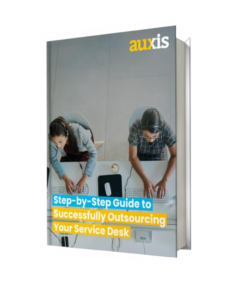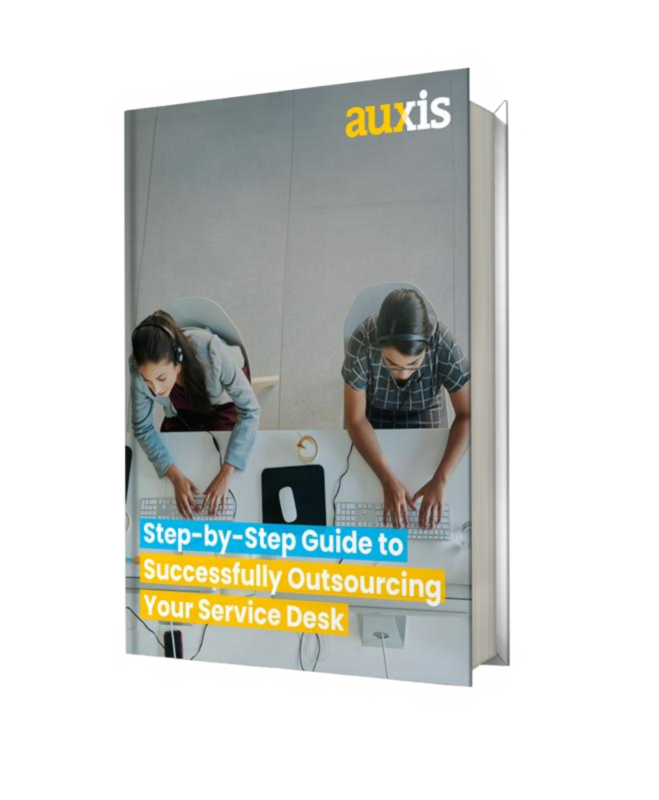In many ways, the service desk forms the face of the IT department. It’s the main connection most of an organization has to IT, and in a lot of ways, delivering outstanding technology support cements the department’s status as a proactive and highly sought-after strategic partner to the business. In some cases, it can be the lifeblood of the organization.
But too many IT departments are stuck in outdated “help desk” models. Not only do they rely primarily upon reactive telephone communication, but they frustrate those seeking assistance with slow response times, inconsistent service levels, and a support schedule that’s limited to business hours only. At the same time, high turnover, inefficient delivery methods, and a lack of operational visibility make it difficult to keep costs from spiraling out of control.
So what happens when you have a confluence of mass inefficiencies? Of course the costs will skyrocket but the average insourced service desk’s first-level resolution rates can also plummet, which then directly affects not only the customer experience but the bottom line as well.
But as technology becomes increasingly central to the smooth operation and success of a business, IT leaders are recognizing the need to evolve this outdated approach into a new generation of efficient, proactive service desks. These high-performance service desks go beyond the firefighting mode of “break and fix” support with functions that transform them into key enablers of core business operations. They easily and economically accommodate the multiple forms of interaction common in today’s business world – from voice mail to email to instant messaging – and dramatically improve end-user satisfaction and productivity.
How to build a high-performance Service Desk
What exactly does it mean to create a high-performance service desk? Take a look at the key characteristics and see how your organization compares:
1. Clearly defined services mapped to business needs. Clearly defined promises minimize the likelihood of disappointing end users seeking support. They also help the service desk stay focused on key business requirements and assure that internal processes follow a direction that aligns with your business’ strategy and growth.
2. Consumption-based pricing model. CIOs are under tremendous pressure to ensure business agility, and that includes easy implementation and support of new technologies. But too often, they find themselves forced to pre-commit to paying for an over-capacity of help desk resources just in case they are needed. A consumption-based model enables businesses to only pay for what they use – significantly slashing costs and getting new technologies and capabilities up and running faster by easily scaling the volume of work and resources up and down.
3. Process dependent vs. people dependent. With 2 in 5 workers leaving every year, help desk turnover is a serious issue. High demand and rising competition within the tech industry combined with a shortage of skilled workers make it easy for top talent to jump to new opportunities, while less experienced workers move on because they feel stressed and ineffective. Help desks that rely on an individual’s capacity and efficiency for performing his or her job will struggle if that person leaves or even fails to show up at work for a few days. Process dependent service desks consistently achieve the exceptional performance businesses demand by implementing repeatable processes that anyone can follow.
4. Robust knowledge base. Besides hiring high-caliber resources, high-performance service desks train their staff regularly and thoroughly to ensure they can handle requests about rapidly evolving technologies. At the same time, they optimize their staffing model with a triage system that speeds resolution by ensuring that senior resources are focused on the highest-value activities. This approach also recognizes that service is the cornerstone of a service desk’s function, and expands its training to emphasize patience, empathy, continuous communication, and the need to take ownership of every request.
5. Strong performance metrics and proactive performance management. If you don’t know where you are, it’s impossible to improve. Service desks that use analytics to track support team metrics reduce response times alone by an average of 16 percent. By regularly taking a hard look at key performance indicators like average speed to answer, average call abandonment rate, and first-contact resolution rate, service desks can continuously improve efficiency and ensure their teams are operating at the highest levels.
This approach also goes a step further by looking for predictive trends that can lower ticket volumes. While traditional help desks simply react to requests, high-performance service desks strive to proactively identify, resolve, and prevent problems before they lead to service-impacting incidents.
6. Workflow automation in core processes. Robotic Process Automation (RPA) demonstrably improves service desk cost-effectiveness and performance – leading to savings of up to 65 percent and productivity gains that can climb as high as 90 percent. Standard requests with defined workflows can be completed 24/7 without any human intervention, letting support teams do more with less resources and focus personal attention on more important, value-added tasks. RPA software tools also provide detailed performance data, increasing operational visibility and enabling continuous improvement.
7. Self-service capabilities. In today’s fast-paced world, people demand instantaneous answers. High-performance service desks offer easy-to-use tools that enable end users to create their own tickets, monitor their status, and even self-resolve some issues – once again reducing overall ticket volume by creating a simple way to solve repetitive problems. These self-service capabilities save valuable time for the end user and minimize the need for service desk resources to perform routine tasks. They also improve satisfaction by providing a quick, direct way to find answers to a variety of questions and empowering users to become their own first line of support instead of impatiently waiting for a response.
8. Flexible staffing model to deal with business cycles. High-performance service desks always stay “right-sized” thanks to a flexible workforce that cushions the highs and lows of economic volatility. This ability to cycle up and down as needs change transforms a significant cost into a variable that many competitors will suffer as fixed during economic downturns, making your organization more competitive, flexible, and scalable, and enhancing profitability.
Outsourcing your service desk transforms end user experience
Ask employees to name one thing that would help them do their jobs better, and an overwhelming number will instantly cite effective tech support. High-performance service desks help businesses enhance productivity, operate more efficiently, keep up with the latest tech trends, and avoid major technology snafus that lead to expensive downtime.
But the tight labor market and business cultures that are resistant to change has IT leaders struggling to economically achieve these key capabilities inhouse. A remarkable outsourcing provider can help IT transform outdated, reactive help desks into high-performance service desks that optimize costs and upscale end user experiences through better processes, governance, and proactive management.



